Best Practices For Maneuvering On The Beach & What To Know
Every off-road enthusiast will encounter deep or soft sand at some point. Whether you find yourself on the beach or take a trip to the dunes, knowing how to drive in soft sand and what to do if you get stuck could save your life, or at the very least save you needless hours of digging with your hands and recovery.
In this guide, we’ll cover everything you need to know about driving in the sand and the basic recovery tools needed if things go south. As long as you follow our tips, you should be able to avoid digging yourself into a hole that ruins your day, or even worse, your rig.
1. Air Down
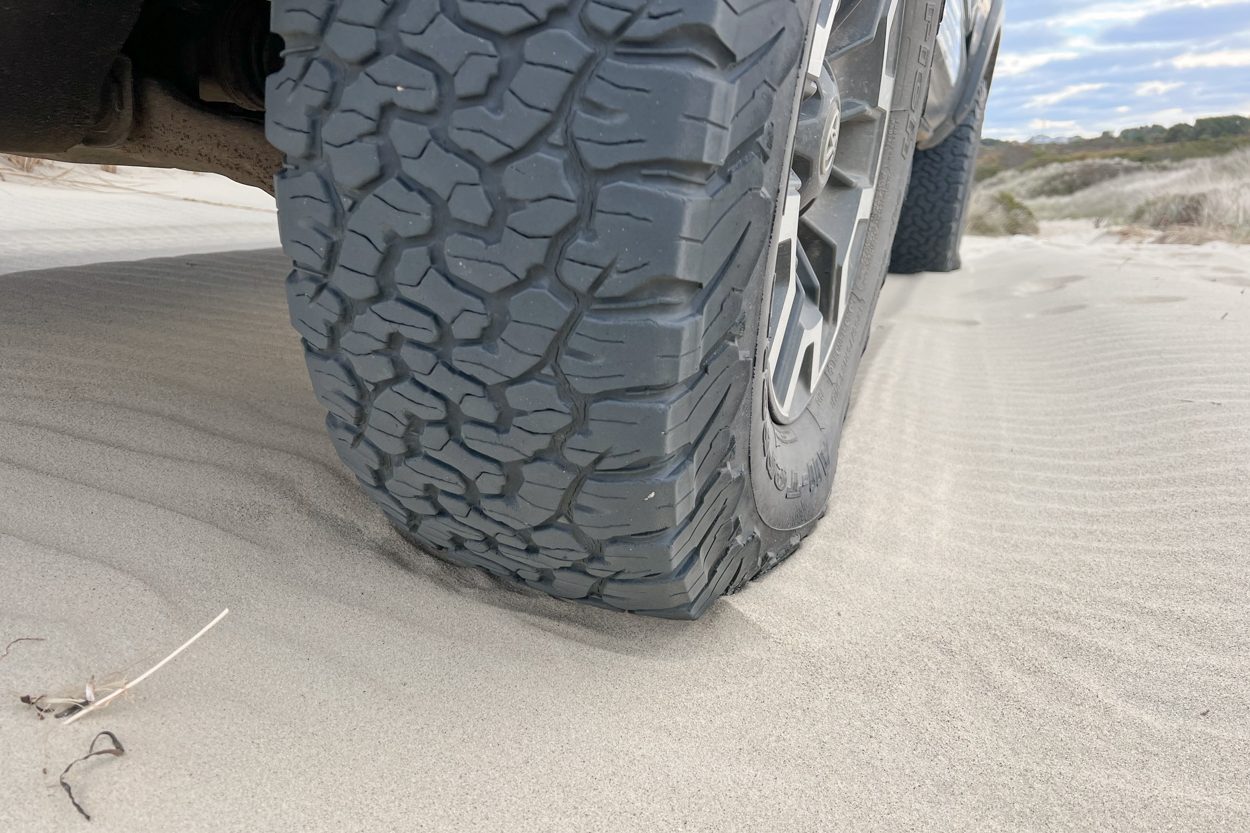
Airing down is the key to staying unstuck when driving in deep sand. It widens your tires’ contact patch and distributes your vehicle’s weight over more surface area, allowing you to “float” on top rather than dig in.
The deeper and softer the sand, the more you should air down. Knowing the conditions of your trail or beach will help you determine what PSI to bring your tires down to. Without bead locks, you should be able to air down to as low as 10-15 PSI. However, drive slowly so you don’t lose a bead.
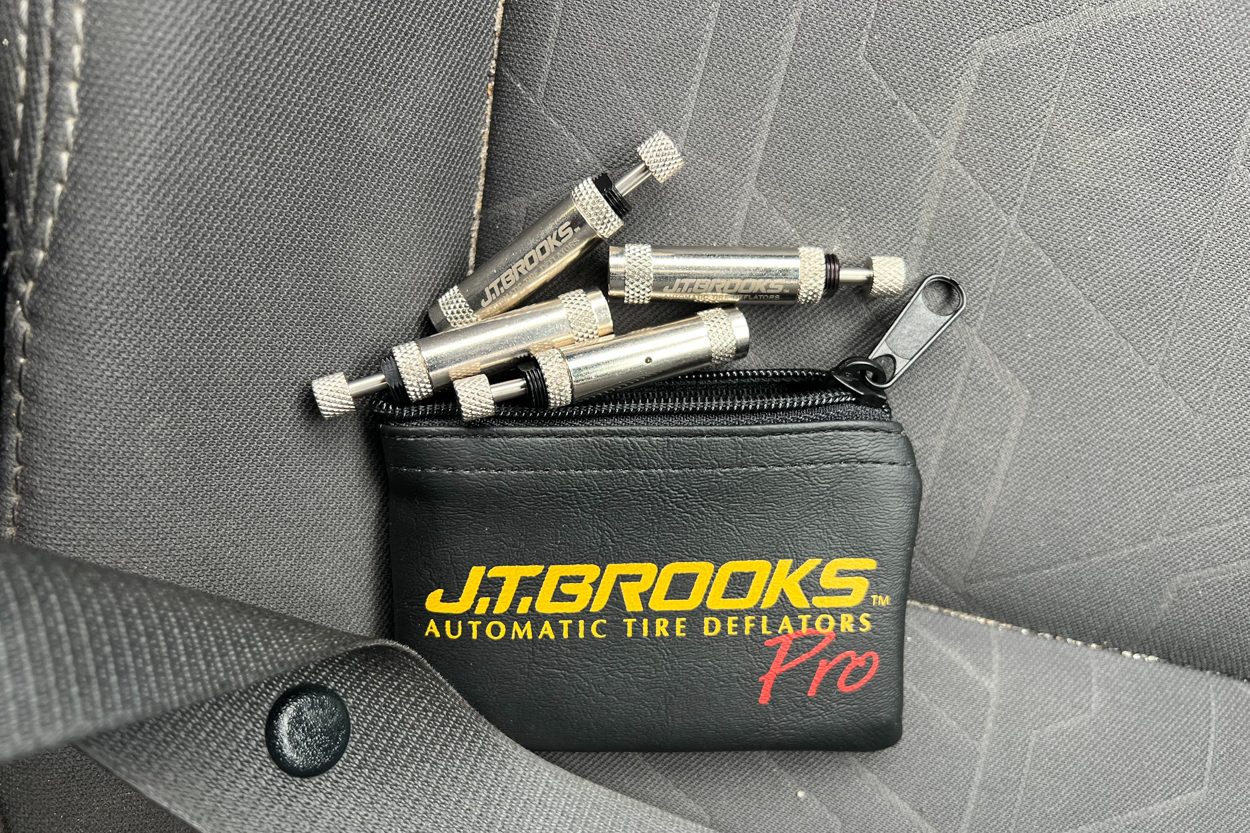
There are a number of tools you can use to air down – a simple tire gauge, a rapid flow gauge/deflator, a 4-tire hose kit, or a set of tire deflators. I use the latter because they’re fast and easy to use, and I air down often so they save me a lot of time. Screw them on, monitor your TPMS, and when you’re at your target PSI, take them off.
Harder packed sand sometimes doesn’t require airing down, but most beaches often have variable conditions with some packed and some soft areas. I usually go down to 14-15 PSI, enough to add traction and float without stressing the sidewalls. If you’re at 15 PSI and you feel like you’re getting stuck, hop out and air down to 10. You’d be surprised at how much more traction and float you’ll get.
Important: Driving on pavement at low PSI can be extremely dangerous. Always air back up before hitting the road.
2. 4Hi Vs. 4Lo
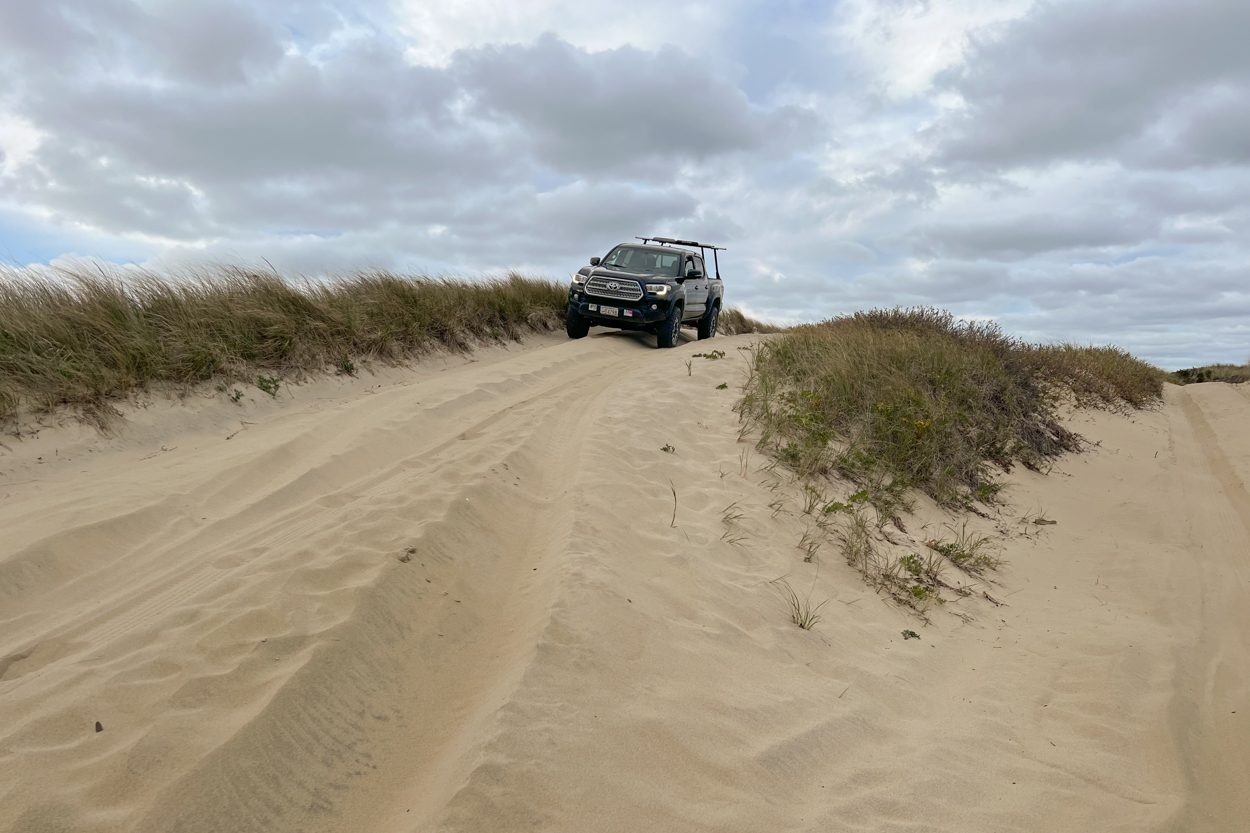
On packed sand, 4Hi should work just fine, especially if you’re traveling over 15mph. If the sand is particularly soft or deep, you may want to use 4Lo. The latter will require you to keep your speed under 40 MPH.
I typically only use 4Lo on sand going uphill, loaded down, or both. It also makes sense in many recovery situations.
If your vehicle is not equipped with a “sand” specific drive mode, traction control can sometimes be more of a hindrance than a help off-road, so shut it off in these conditions.
3. Stay In The Ruts
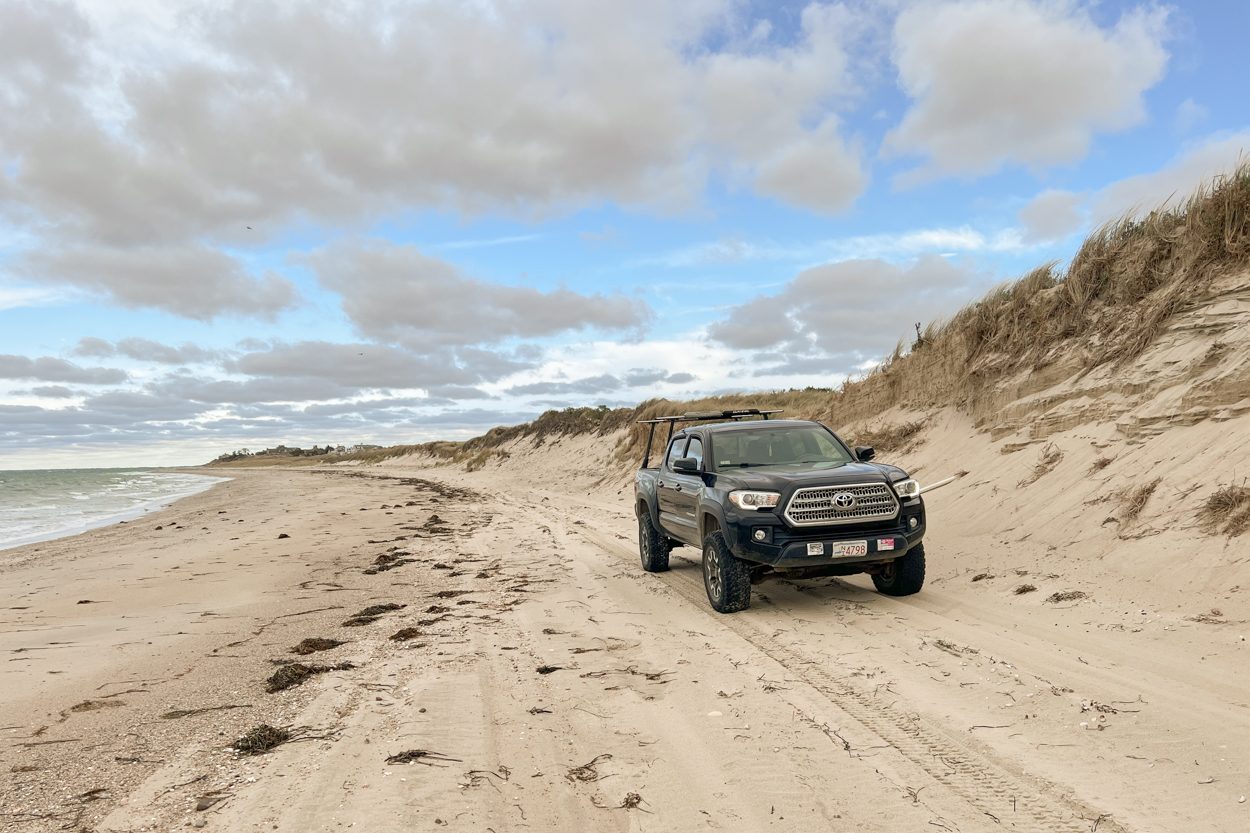
Stick to the ruts to reduce stress on your mechanical systems. Your rig won’t have to work as hard to stay in line or keep rolling, and your wallet will thank you. Less stress on the rig means less wear and tear on parts and less fuel burned. You’ll notice that when aired down and driving through soft sand, RPMs are high, and 4WD chugs fuel.
Dunes are fragile, and as you would on any off-road trail, only drive where permitted. It’s the right thing to do and will help you stay on top of the sand instead of buried in it.
4. Avoid The Water
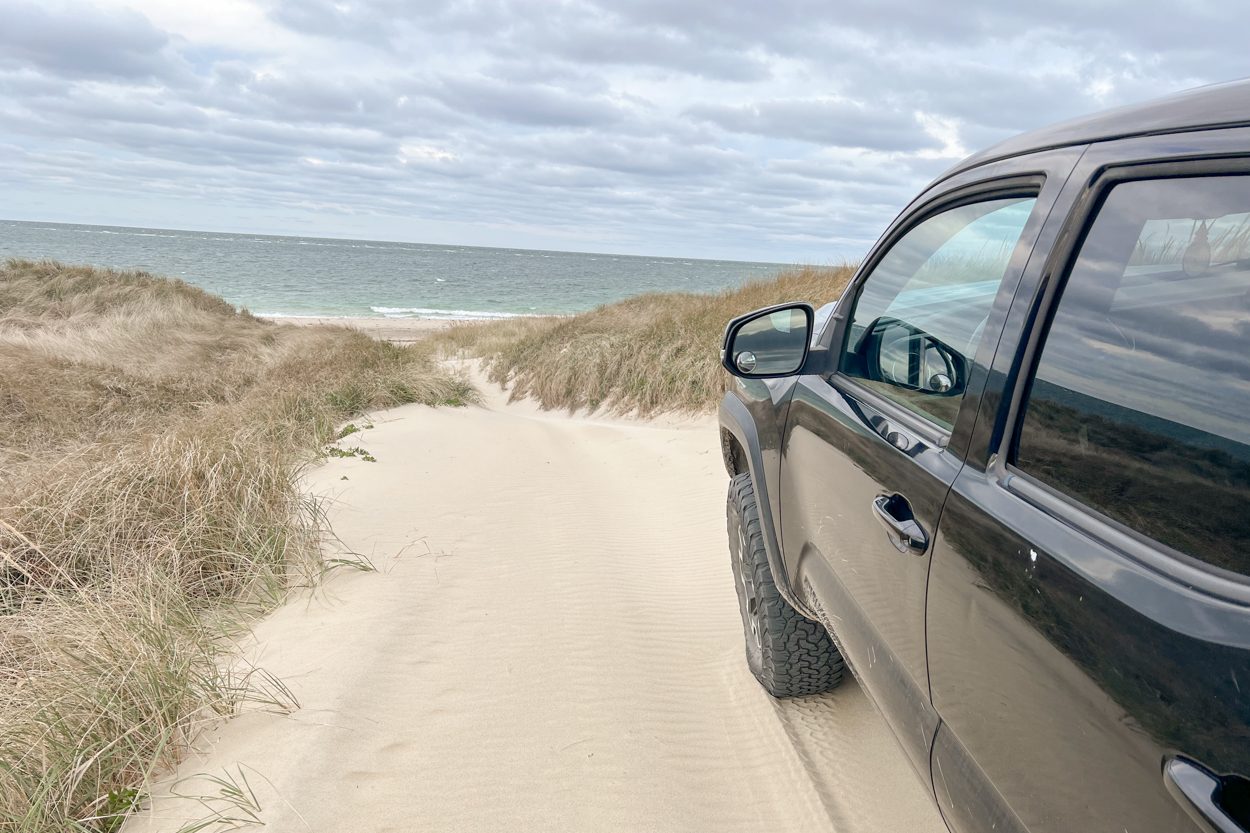
When you’re on the beach, don’t drive into the water unless it’s 100% necessary. Creek crossings can be a blast, but unnecessarily driving through them when mixed with sand can be catastrophic for your vehicle and pride. Moving water means shifting sand, and you can quickly end up buried up to your frame.
If it’s salt water, don’t do it, period. Anytime you drive through salt water, it gets way up into places it shouldn’t be and will cause corrosion. If you do, thoroughly rinse your vehicle as soon as possible, especially the undercarriage.
If water is unavoidable, don’t go too fast or too slow, keep your momentum, and always have a backup plan. It can’t hurt to have a recovery strap, shackles, or a winch ready.
Finally, don’t drive below the tide line as water can quickly rush in and engulf your vehicle.
5. Keep Your Momentum
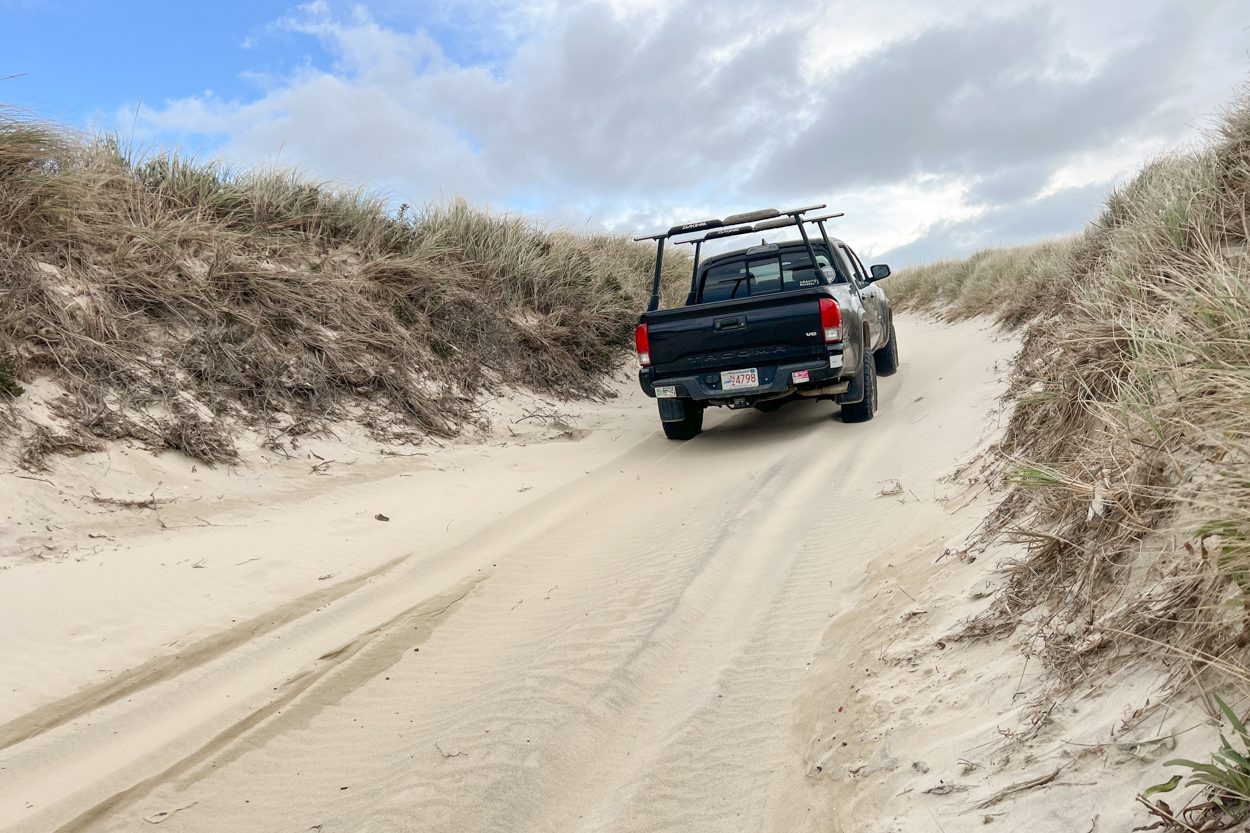
Driving in sand can be straining on a vehicle. Keeping your momentum steady and minimizing excessive wheel spin will help keep your fuel consumption down, and your motor and transmission overheating. Maintaining a steady RPM is the best way to keep everything cool.
Momentum is important when climbing sandy hills, and is an exception to keeping your RPMs low. When stepping on the gas to gain the momentum you need, keep an eye on your gauges and be aware of unusual sounds and smells. It’s easy to overheat your mechanical components in deep sand, particularly when loaded up.
6. Bring A Friend
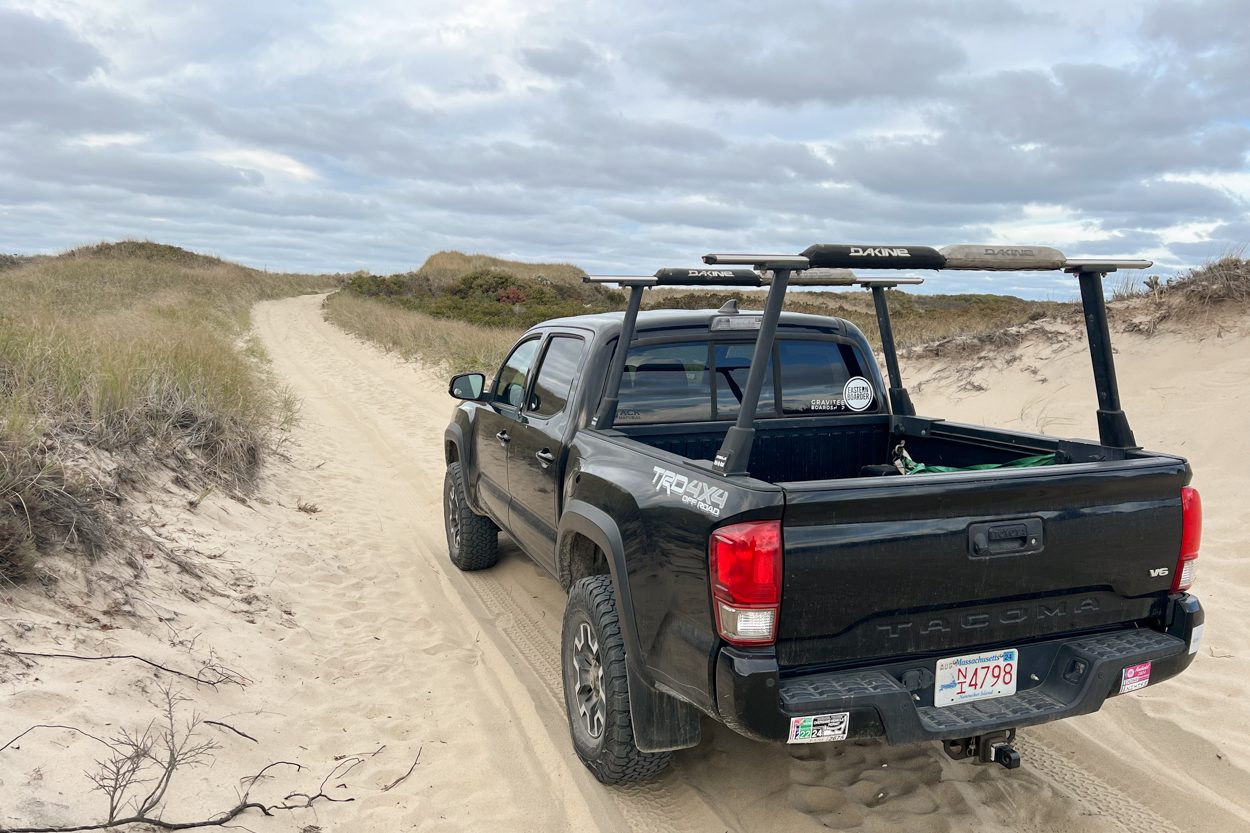
Having a second set of hands if you get stuck or even better, another capable rig can be a lifesaver. With the right tools, you should be able to get yourself unstuck if you end up buried. However, the process is way easier with help.
7. Know Your Tow Points
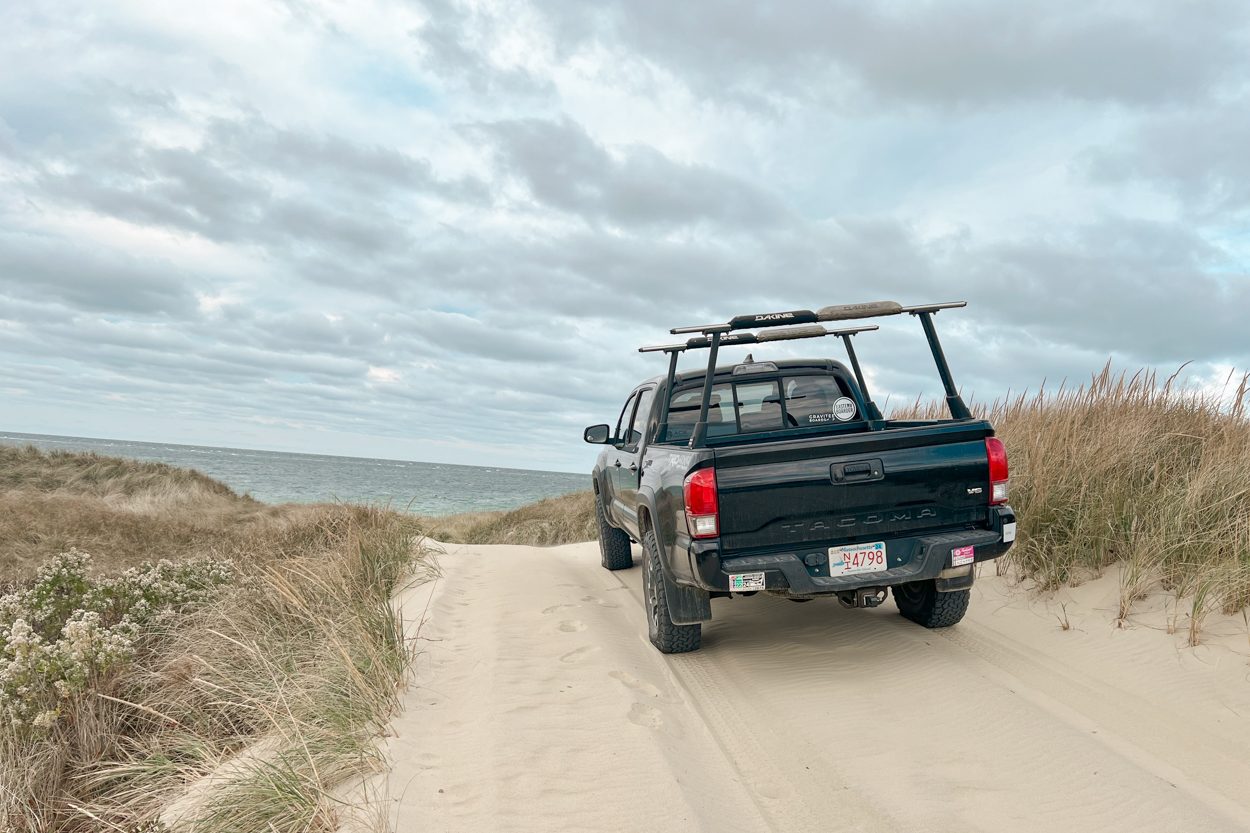
You may or may not be familiar with your rig. Maybe you rented a Jeep on vacation, you’re in your friend’s truck, or you’ve never actually been stuck enough to need a tug out.
Either way, it’s important to know where your recovery points are, how to access them if they’re behind panels or tucked under the bumper, and how to hook up to them. This ensures you can safely be pulled without risking injury. Don’t be those people on YouTube with the ball hitch flying through the windshield.
8. Recovery Gear
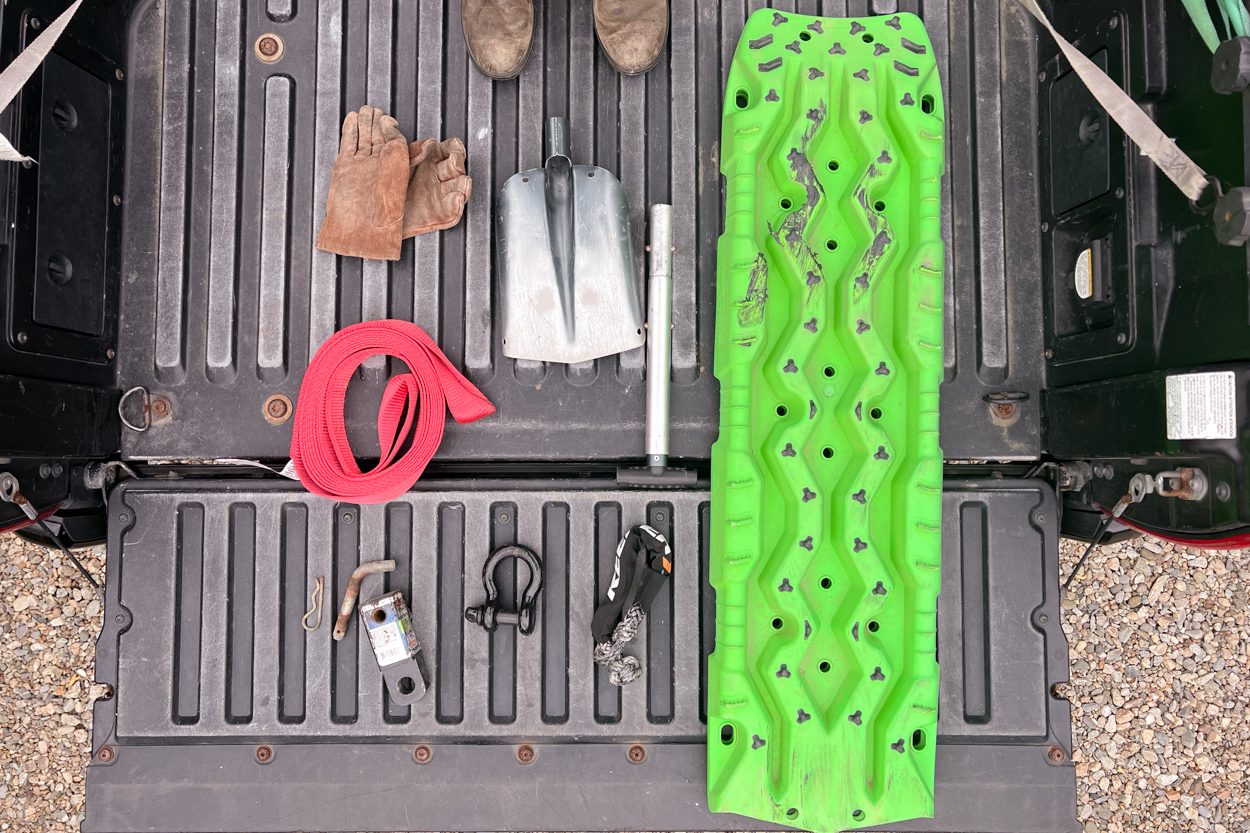
You may be a good off-road driver, but having the right gear in case you get stuck makes a great one.
Here are a few essentials for driving in the sand that you shouldn’t leave home without…
- Gloves – Your hands will thank you.
- Shovel – Should be big enough to actually move some sand.
- Traction Boards – These are my most used and favorite sand recovery accessories. They are a safe and effective way to get a stuck vehicle out without a second vehicle.
- Tow Strap(s) – Having one is good, having two and an axle strap is better. Make sure it’s rated to tow at least the weight of your vehicle.
- Shackle Hitch Receiver – Again, one is good, but two is better, in case your friend’s rig doesn’t have one. They’re small, inexpensive, and most importantly, provide a safe recovery point.
- Shackles – Soft shackles are one of my new favorite recovery tools, versatile, strong, and flexible and can make the job of getting unstuck a lot easier. You should have at least two.
That’s your essential beach tool kit. Knowing how to safely and effectively use these tools will take a little training, so research proper techniques before you put them to use. There is next-level gear to this list like onboard air compressors, off-road jacks, and winches accessories, but the list above is the staples.
Final Thoughts
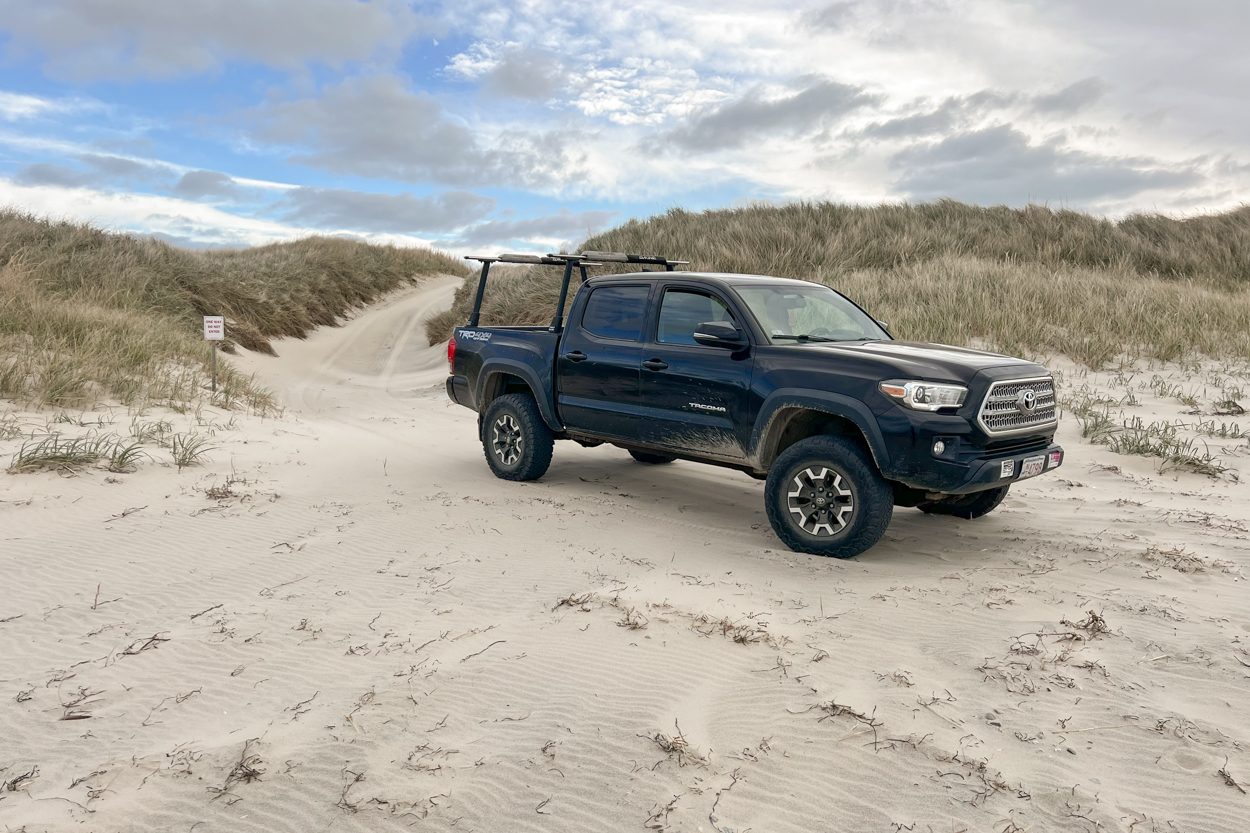
With the proper recovery gear, a good understanding of your route and conditions, and knowing the best practices for driving in sand, you should be all set for a great time.
Even if you get a little stuck, sometimes that’s the fun part, as long as you can get yourself out. A final tip on sand driving, if you feel yourself getting stuck, know when to stop spinning your tires. Don’t make the recovery harder on yourself by digging a deeper hole.
We hope the guide helps, and that you can now confidently tackle the dunes or beach (whichever is closer)!
If you think we’ve missed any important tips, drop a comment!
